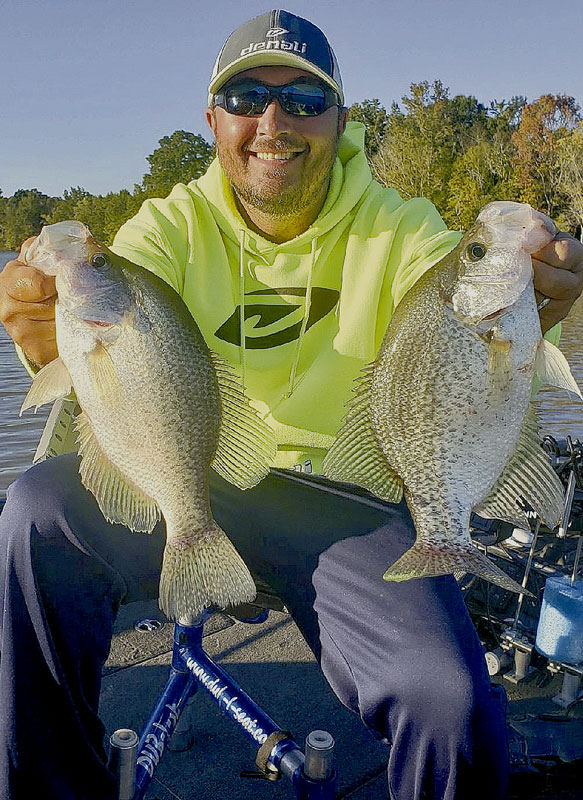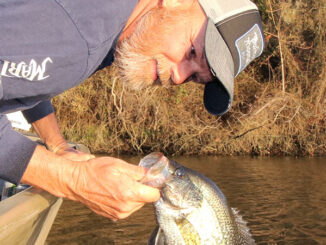
Find the bait on High Rock, and you’ll find the crappie
Two years ago, Shane Walser of Midway, N.C., realized a lifelong dream. He began operating a fishing guide service, Yadkin Lakes Crappie Guides, on High Rock, Tuckertown, Badin and Tillery lakes.
His favorite fall crappie haunt is High Rock. And 25 years fishing there has taught him how to put slabs in the boat in November.
“Find the bait, and you’ll find the fish,” he said.
But finding isn’t enough to guarantee success alone. Instead, you need to understand how the bait looks on your electronics.
“I don’t like seeing clouds of forage on my sonar unit,” said Walser. “That usually means no predators are around trying to eat them. When the bait is scattered or broken up, that means crappie are present and feeding.”
Bunched forage serves as a defense mechanism against lurking predators. When the crappie actually begin feeding, Walser said the big balls or pods of bait will break down into smaller ones.
Few big crappie, but lots of decent-sized ones
Walser looks for feeding crappie either at the backs or mouths of Second, Swearing or Crane creeks in 6 to 25 feet of water. They’ll hold on brush, although High Rock’s fluctuating water level can affect which brush draws fish.
He slow-trolls likely places with eight 15-foot Denali Pryme Brad Chappell trolling rods on his bow, paired with Shimano 1000 spinning reels filled with 6-pound Slime Line monofilament.
Walser uses a double-minnow rig that employs a Jenko 3-way Big T Tangle Free swivel with the main line tied to one swivel, a 1/2-ounce weight connected to another and the double-minnow rig attached to the third. The rig has a leader with a No. 1 red Aberdeen hook at the end with another hook attached above the bottom hook.
“I use minnows about 95% of the time,” he said. “Crappie feed up in November, and I’ve found live bait works better than jigs.”
Water color doesn’t matter at High Rock, which can change from slightly stained to crimson in a heart beat, he said. “I’ve caught crappie at High Rock in every hue imaginable.”
In terms of water flow, Walser prefers a steady pull of the lake rather than a robust one.
On a given trip, Walser said his clients can expect to catch 40 to 50 crappie 10 inches or longer.
“High Rock is known for its number of crappie rather than its size of fish,” he said. “A 2-pound crappie is considered a big fish.”




Be the first to comment